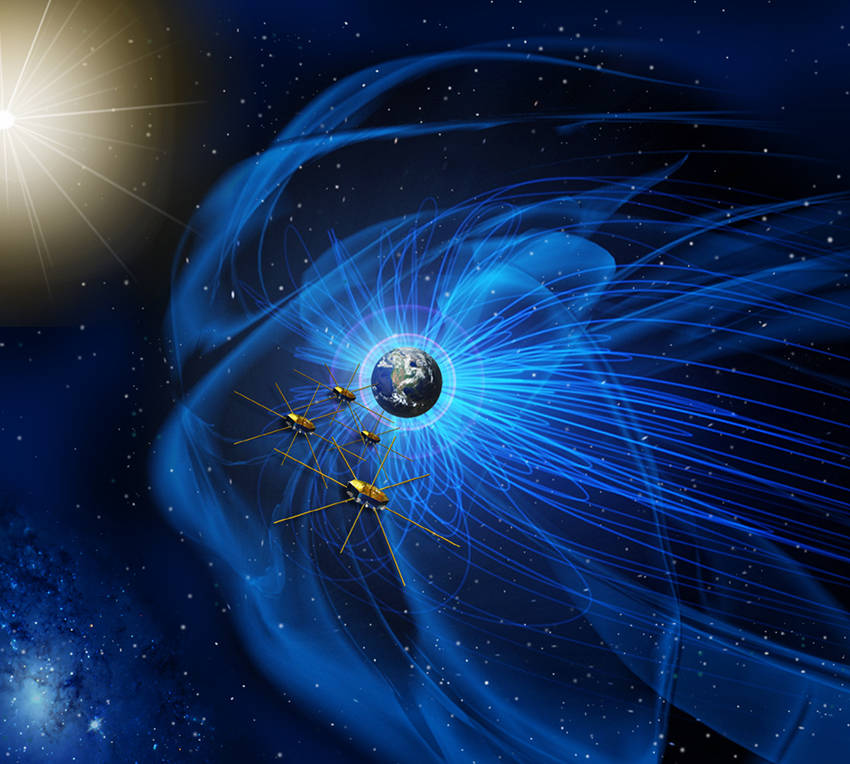MMS
In March 2015, NASA launched the Magnetospheric MultiScale Mission, to investigate how the Sun's and Earth's magnetic fields connect and disconnect, explosively transferring energy from one to the other. This process occurs throughout the universe and is known as magnetic reconnection.
MMS uses four identical spacecraft flying in a pyramid-shape to measure magnetic field lines and charged particles in three-dimensions. Using a 100 times faster instruments, MMS reaches an unprecedented (milliseconds) time resolution and accuracy.
By observing magnetic reconnection, MMS provides access to predictive knowledge of a universal process that is the final governor of space weather, affecting modern technological systems such as communications networks, GPS navigation, and electrical power grids. So MMS establishes knowledge, methods and technologies applicable to future space weather missions.
After that, MMS elongated its orbit to begin looking at reconnection behind Earth, where it’s thought to spark the auroras. Since MMS has completed its original mission goals, it’s now taking time in its extended mission to tackle some new science objectives: understanding turbulence in the solar wind when it reaches Earth, this is one of NASA’s prime science objectives.
Access to mission data |

|
Access to mission documents |

|

Data per experiments
Here you can access data of each experience archived on this site:
News and useful links
More information, including mission descriptions, can be found at MMS NASA Website
Other links: LPP Website,
LASP (MMS Science data center)